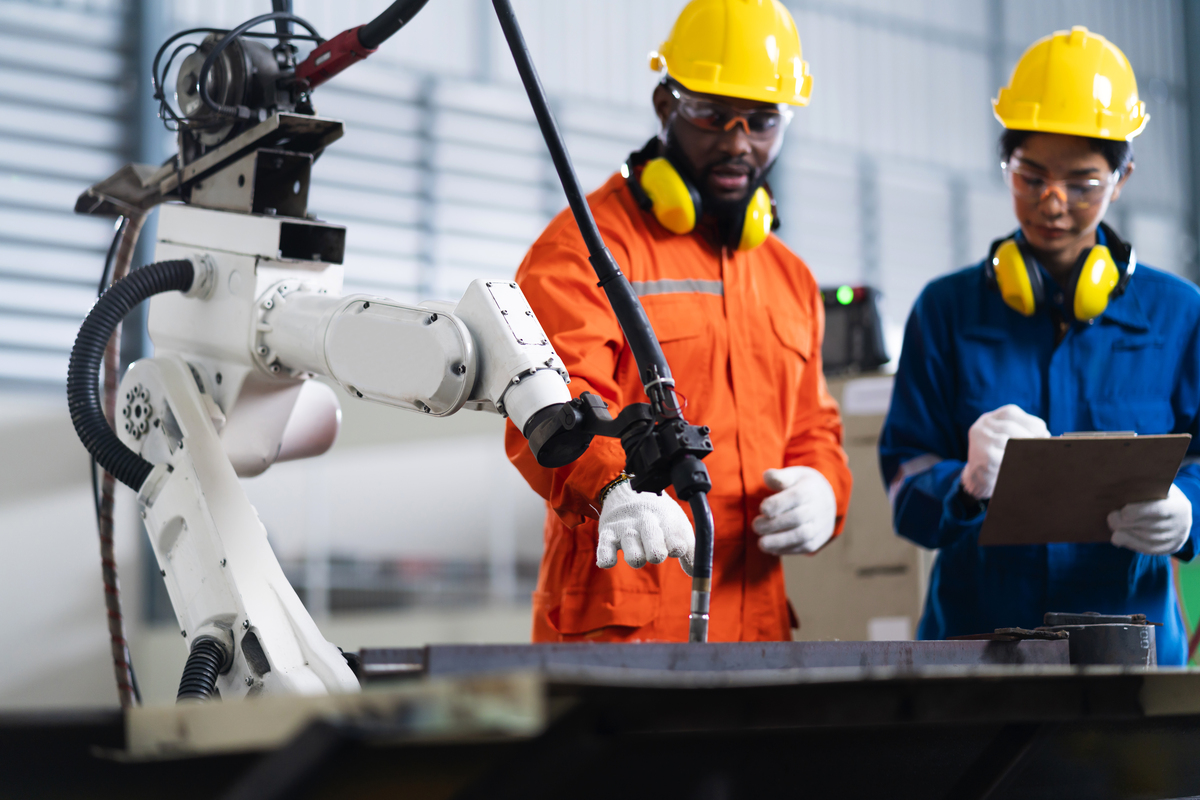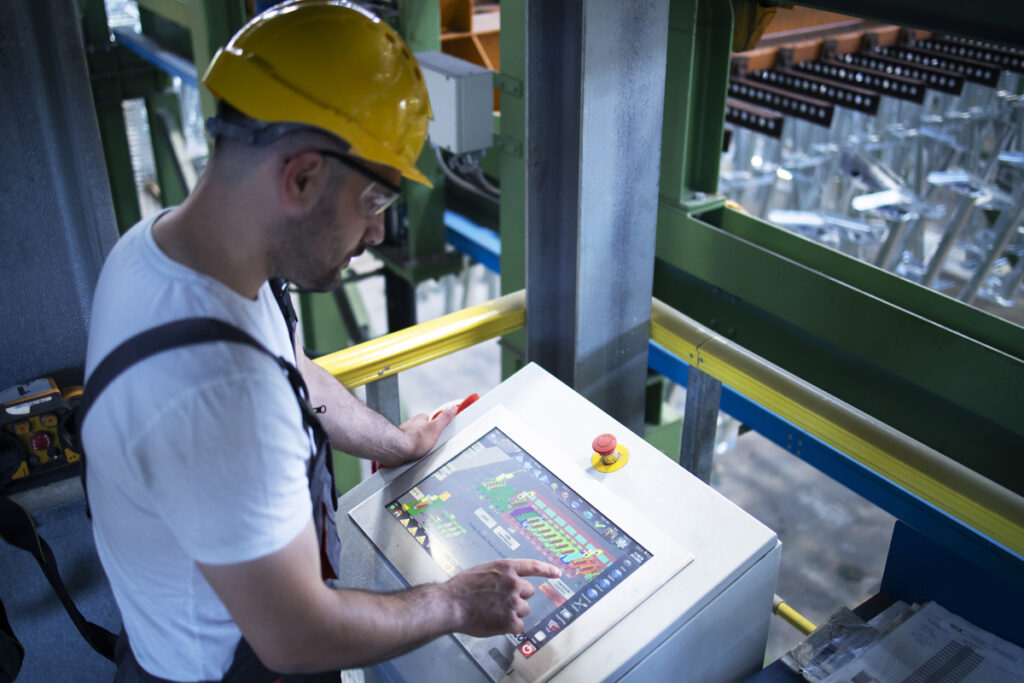Exclusive Neuroject Article: Welcome to the exciting world of construction automation! As we step into the year 2024, the construction industry is buzzing with the promises of cutting-edge advancements that are set to revolutionize the way we build. From autonomous construction equipment to the integration of artificial intelligence, this guide will take you on a journey through the transformative power of automation in construction.
Gone are the days when manual laborers were solely responsible for constructing towering buildings and intricate structures. With the rapid development of technology, the industry is now witnessing a seismic shift towards automation. Imagine an army of autonomous robots seamlessly working together, efficiently executing complex tasks with unparalleled precision. This vision is no longer confined to the realms of science fiction; it is steadily becoming a reality. Other industries have been altered by automation, but its impact on the building industry is yet unknown. This thorough compilation examines the possible advantages of automation in the construction business and its effects on the sector.
Automation in construction can save 80% of project managers’ time by eliminating the need for data gathering, progress information, and administrative tasks. By providing intelligent chats, companies can access necessary information, analyze data, and determine site presence for painters. This technology can streamline administrative tasks and improve efficiency in the construction industry.
As we delve deeper into this guide, we will explore these fascinating advancements in greater detail, showcasing how automation is reshaping the construction industry as we know it. So fasten your seatbelts and get ready to embark on a journey that is bound to redefine the very foundations of construction in the year 2024 and beyond.
________________________________________________________________________________________________________________________________________________
Table of Contents
Introduction:
Automation has become an integral part of various industries, revolutionizing the way tasks are performed and transforming traditional processes into more efficient and streamlined operations. The construction industry is no exception, as it embraces automation technologies to improve productivity, enhance safety, and achieve cost-effective project delivery.
In this article, we will explore the advancements and applications of automation in construction, providing a comprehensive guide to the year 2024 and beyond. One of the key drivers behind this transformation is the rise of building information modeling (BIM). This innovative technology allows architects, engineers, and construction professionals to collaborate and visualize projects in a virtual environment. By harnessing the power of BIM, construction companies can optimize their workflows, enhance communication, and significantly reduce errors and rework on-site.
Safety technologies are another crucial aspect of the automated construction landscape. With the integration of sensors, wearable devices, and real-time monitoring systems, construction sites are becoming safer than ever before. These technologies provide early warnings for potential hazards, track worker movements, and enhance overall job site security. Last but certainly not least, artificial intelligence (AI) is set to be the backbone of future construction projects.
AI-powered algorithms can analyze vast amounts of data, optimize construction schedules, and predict potential bottlenecks. From intelligent project management systems to automated quality control processes, AI will propel the industry toward greater efficiency, resource optimization, and cost-effectiveness. Automation in construction has gained significant momentum due to its ability to enhance productivity, efficiency, and safety.
With the help of advanced technologies, construction companies can automate repetitive tasks, increase accuracy, and reduce overall project timelines. One key area where automation has made a profound impact is in heavy machinery operations, allowing for precise movements and minimizing human error.
Suggested article for reading: AI in Construction

Uses of Automation in Construction:
Robotics and artificial intelligence (AI) are being used more and more in the construction industry for jobs like pouring concrete, laying bricks, and even 3D printing building materials. Algorithms for artificial intelligence (AI) support automated data analysis, proactive maintenance, and better resource management.
How can the usage of automation in construction be optimized to achieve the best results?
- Planning and Strategy: It is essential to have a clear plan and strategy before introducing automation in construction. This entails determining the parts of the construction process, such as repetitive jobs or dangerous work settings, where automation can be most advantageous. Construction organizations may control the usage of automation and make sure it complies with their overall project requirements and vision by clearly stating the goals and objectives.
- Collaboration and Training: In order to fully reap the rewards of automation, it is crucial to give the construction workers who will be utilizing these technologies the necessary training and assistance.
Workers should be trained in the use and upkeep of automated devices and systems so they can coexist peacefully with these innovations. Additionally, promoting teamwork among employees and automation technology can increase production and efficiency. On the building site, decision-making and problem-solving can be improved by combining human knowledge and technological skills. - Continuous Monitoring and Evaluation: Automation in construction should be a continuous process rather than a one-time implementation. It’s important to regularly monitor and evaluate to find any problems or potential areas for development. This can entail monitoring the effectiveness and performance.
Now let’s explore some of these debated uses of automation in construction in practical fields in the construction world nowadays!
Use Of Drones and Remote Sensing in Automation in Construction:
Unmanned aerial vehicles (UAVs) with high-definition cameras and sensors provide for accurate topography mapping, site surveillance, and progress monitoring. Additionally, they assist with conducting inspections in difficult-to-reach regions and locating potential safety concerns.
Automation in construction sector has undergone a revolution thanks to drones and remote sensing technology.
These solutions give construction organizations access to real-time data and aerial views like never before, enabling more effective and precise project management. Drones with high-resolution cameras and sensors may take in-depth pictures and videos of construction sites, supplying useful data for site inspection, tracking development, and quality control.
Drones can have thermal cameras and LiDAR sensors in addition to imaging capabilities, allowing them to gather information on temperature changes and surface elevations. This data is particularly helpful for spotting potential safety risks and keeping track of the stability of structures.
By using automation in Construction organizations can lower the cost of inspection and monitoring operations by deploying drones. A requirement for manual inspections, and measures to reduce the dangers of working in dangerous environments. Satellite imaging and other types of ground-based sensors are examples of remote sensing technology that support the use of drones by offering a wider perspective and ongoing construction project monitoring.
Project managers can follow progress, pinpoint problem areas, and assess the effects of environmental conditions by using satellite data to capture large-scale changes over time. On the other hand, ground-based sensors can collect data in real time for environmental compliance and quality assurance by measuring variables including air quality, noise levels, and vibration.
Overall, the use of automation in the construction industry through the use of drones and remote sensing has many advantages, such as higher safety, increased productivity, and improved decision-making. Construction organizations should anticipate even greater breakthroughs in their capacity to streamline project workflows and produce results of the highest caliber as these technologies continue to develop and become more widely available.
Suggested article for reading: Drones in Construction
Building Information Modeling (BIM):
BIM combines different construction data sources to produce digital representations of buildings, enhancing stakeholder collaboration and project visualization. Quantity takeoffs, cost estimation, and clash resolution can all be automated in BIM.
Automation in the construction industry has been revolutionized by the use of the powerful tool known as Building Information Modeling (BIM).
Building Information Modeling (BIM) is a powerful tool that has revolutionized the automation in construction industry. It enables construction professionals to create and manage detailed digital representations of the physical and functional characteristics of a building project throughout its lifecycle. Project planning, design, construction, and operation are all streamlined by BIM, which combines 3D modeling, data management, and collaborative processes.
One of the main advantages of using BIM in automation is improved coordination and communication among project stakeholders. By creating a centralized digital model, architects, engineers, contractors, and other team members can collaborate more effectively, reducing errors and conflicts during the construction process. BIM also allows for real-time visualization, enabling stakeholders to visualize and understand the project before it is built, leading to better decision-making and more accurate cost estimation.
Moreover, BIM in automation enhances productivity and efficiency. The software enables automated quantity takeoffs, clash detection, and clash resolution, which helps to optimize the use of automation in construction sequencing and reduces the rework. BIM also facilitates the automatic generation of construction documents, saving time and effort for project teams.
Furthermore, with BIM, construction companies can simulate and analyze different scenarios, enabling them to identify potential issues and find innovative solutions early in the design phase. Overall, BIM in automation significantly improves project outcomes, reducing costs, minimizing risks, and delivering high-quality buildings. And proving remarkable as an example of automation in construction.
Suggested article for reading: BMI in construction

Off-Site Prefabrication and Modular Construction:
Automation has significantly contributed to the rise of off-site prefabrication and modular construction techniques. Factory-controlled processes lead to higher precision, reduced material waste, and faster project completion.
Off-site prefabrication and modular construction are two areas in the construction industry that have greatly benefited from automation. With the use of automation technologies, such as robotics and advanced machinery, off-site prefabrication has become more efficient and streamlined. Prefabrication involves manufacturing components or entire sections of a building in a controlled factory environment, which are then transported to the construction site for final assembly.
Automation enables precise and accurate fabrication of these components, reducing errors and improving productivity. It also allows for faster production times, as machines can work continuously without needing breaks or rest.
Modular construction, on the other hand, refers to the process of constructing a building using pre-made modules that are manufactured off-site. These modules are made to standard sizes and specifications, ensuring consistency and quality across all units. Automation plays a crucial role in the production of these modules, allowing for precise assembly and integration of building systems.
Robots and automated systems can be used to install electrical and plumbing systems, as well as conduct quality control inspections. This not only speeds up the construction process but also enhances the overall quality of the finished building.
Automation has revolutionized off-site prefabrication and modular construction in the construction industry. It has improved efficiency, reduced costs, and increased productivity. By leveraging automation technologies, construction companies can deliver projects faster, with higher quality and greater precision. As automation continues to advance, we can expect even greater advancements in the use of automation in construction.
Suggested article for reading: Construction Robots
Current State of Automation in 2024
As we enter 2024, automation in construction has become increasingly prevalent. Many construction companies have embraced the use of automation in construction as a means to stay competitive and address labor shortages. Robotic solutions, such as autonomous bulldozers and cranes, have become industry standards, while AI-powered software continues to refine construction processes. The integration of automation in construction technologies into existing workflows is becoming more seamless, leading to improved efficiency and output.
In 2024, the current state of the use of automation in construction in various industries is rapidly evolving and showing immense potential for growth. Automation technologies such as artificial intelligence, machine learning, and robotics have become increasingly integrated into everyday operations, driving transformative changes across industries. In manufacturing, automation has revolutionized production processes, leading to higher output, improved quality control, and reduced labor costs. The use of autonomous vehicles and drones has also gained traction, streamlining logistics and delivery operations.
In the service sector, The use of automation in construction has become prevalent in customer service, with chatbots and virtual assistants handling routine inquiries and providing instant solutions. Data analytics and machine learning algorithms are being utilized to improve decision-making processes, ranging from financial services to healthcare.
Additionally, automation in construction is transforming the transportation industry with the development of self-driving cars, electric vehicles, and smart traffic management systems. These advancements not only enhance efficiency but also contribute to environmental sustainability and safety.
Overall, the current state of automation in 2024 indicates a promising future where technology continues to play a pivotal role in reshaping industries. As automation in construction becomes more sophisticated and integrated, businesses and organizations are poised to benefit from increased efficiency, cost reduction, and improved productivity. Embracing automation in construction allows companies to stay competitive in an ever-evolving landscape and unlock new opportunities for growth and innovations.
Where Is Automation in Construction Going to?
Automation in construction is rapidly evolving, offering numerous benefits such as increased efficiency, improved safety, reduced costs, and enhanced productivity. Autonomous construction equipment, such as robotic bulldozers, excavators, and cranes, is revolutionizing construction by operating independently without direct human intervention. This eliminates the need for manual labor and allows tasks to be completed with higher accuracy and speed.
Building information modeling (BIM) software is another important use of automation in construction, enabling professionals to create digital representations of buildings and infrastructure, reducing errors, improving communication, and enhancing project coordination.
Automation is also being utilized in the construction of modular and prefabricated buildings, which are manufactured off-site and transported to the construction site for quick and efficient assembly. This approach allows for faster construction times, reduced waste, and increased cost-effectiveness. Robotics and drones can perform hazardous tasks, reducing the risk of accidents for workers. Automated systems can also monitor construction sites in real-time, detecting potential hazards and alerting personnel to take necessary precautions.
The deployment of automation in construction is not limited to these areas alone. 3D printing in construction is being used to create intricate building components, reducing material waste and construction timelines. This technology has the potential to revolutionize the construction industry by allowing for the rapid production of complex structures at lower costs.
AI and machine learning algorithms are also emerging in construction project management, analyzing large volumes of data, identifying patterns, and making accurate predictions. AI-powered systems can assist in quality control by identifying defects or anomalies in construction materials or processes, ensuring the delivery of high-quality projects.
Pros and Cons of Automation in Construction:
Pros:
- Enhanced productivity and reduced project timelines.
- Improved safety by minimizing human involvement in hazardous tasks.
- Higher accuracy and precision in construction processes.
- Cost savings through reduced labor requirements and material waste.
- Improved resource allocation and data-driven decision-making.
Cons:
- Initial investment costs for implementing automation technologies.
- Potential job displacement and the need for improving the skills of the workers.
- Technical complexities and potential system failures.
- Limited adaptability to complex and unique construction projects.
- Ethical considerations surrounding the use of AI and robotics in construction.
Yes, the mentioned above are indeed valid pros and cons of implementing automation technologies in the construction industry. Automation can definitely lead to cost savings and improved resource allocation, as well as data-driven decision-making. However, it is important to consider the initial investment costs, potential job displacement, and the need to improve the skills of the workers. Technical complexities and system failures can also pose challenges.
The adaptability of automation technologies to complex and unique construction projects may be limited. Lastly, ethical considerations surrounding the use of AI and robotics in construction should not be overlooked. It is essential to weigh both the benefits and drawbacks before implementing automation in the construction industry.

Conclusion:
Automation in construction has transformed the industry, offering numerous benefits in terms of productivity, efficiency, and safety. As we navigate through 2024, the use of automation technologies, including robotics, AI, drones, and BIM, continues to shape the construction landscape. While the pros of automation are substantial, it is imperative to address the potential cons and challenges associated with its implementation.
By carefully considering both the advantages and limitations, Automation in construction professionals can leverage automation to propel their projects into the future while ensuring the well-being of their workforce.
As the construction industry embraces automation in the year 2024, the benefits are evident across various aspects of project delivery. From robotic construction assistants to smart PPE and advanced analytics, the possibilities of automation in construction are vast.
As professionals, it is crucial to embrace these technologies, adapt to the changing landscape, and leverage automation to improve productivity, enhance safety, and deliver successful construction projects. By doing so, the construction industry will continue to thrive and revolutionize the way we build for the future.
of automated systems, analyzing data generated by these technologies, and seeking feedback from workers and stakeholders. By continuously monitoring and evaluating the use of automation, automation in construction companies can make necessary adjustments and improvements to optimize its benefits and minimize any potential drawbacks.
In summary, optimizing the use of automation in construction requires careful planning and strategy, comprehensive training and collaboration, as well as continuous monitoring and evaluation. By following these guidelines, construction companies can effectively control the use of automation and ensure the best results in terms of efficiency, productivity, and project outcomes.
Suggested article for reading:
important construction technology in 2024
7 Important Building Technology Ideas for 2024
References:
wbdg | impactmybiz | buildsoft | sciencedirect | mdpi | constructible.trimble | burniegroup | forbes | remotefillsystems | britannica
All referenced pictures: freepik





